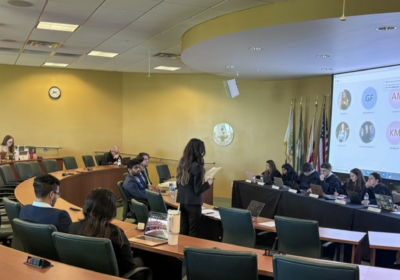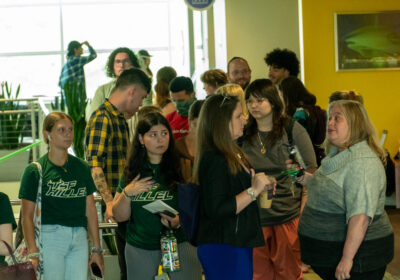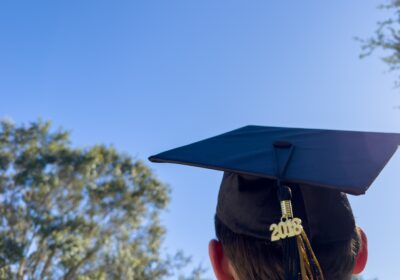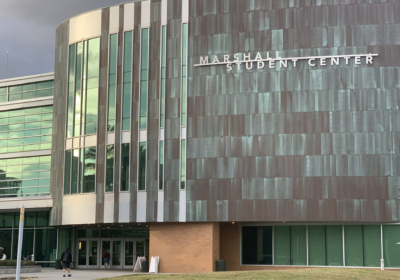Higher learning: Library to lend out drones

SPECIAL TO THE ORACLE/EILEEN THORTON
Not long ago the most advanced technology checked out of a library was VHS tapes, but soon students can borrow drones from the USF Library to learn from a bird’s eye view.
Starting in fall, the newly renovated USF Library plans to allow students to check out a remote-controlled aircraft equipped with an underbelly camera, similar to how a student would check out a book.
Nancy Cunningham, director of academic services for the Library, said the drones would let architecture students inspect a building’s dimensions or allow an environmental student to reach rough terrain inaccessible by foot.
“The fact that you could collect digital footage from a height that normally you would need a helicopter — I think — expands the possibilities for students,” she said.
With grant money left over from renovations, the Library purchased two drones: Phantom I and Phantom II.
They weigh approximately 25 pounds each, with a flight time of up to 25 minutes and can hover up to 400 feet. The Phantom II’s controller can also sync with an iPhone for a first-person view while in flight.
But no one can take it out for a joy ride on a whim, Cunningham said. All students will need a teacher approved reason and will be supervised by a trained faculty member.
“You can’t just walk in and say, ‘I want to check out a drone,’” she said.
Students will also take an “intensive” training course, said Maryellen Allen, assistant director for instructional services.
“You’re going to have to understand how it works and how it operates,” she said. “And prove you can maneuver it correctly so you’re not crashing into stuff.”
Though there is a “you break it, you buy it” policy set at $1,500 per drone by the Library, Cunningham said students shouldn’t be concerned with drones crashing. They’re equipped with a backup battery and programmed to return to the point of take off if communication with the controller is interrupted.
“It doesn’t just fall out of the sky,” she said.
Coincidentally, the Library’s announcement coincided with Federal Aviation Administration regulating unmanned aircraft. Model aircraft must remain in sight of the operator, avoid crowds and cannot be used for non-recreational purposes.
The Library is finding out whether the planned usage is compliant with the regulations, Cunningham said.
“We need to find out if we can fly them and where we can fly them,” she said. “Or if we can take them off campus.”
The regulations follow reports of reckless flying and public skepticism. Recently, Los Angeles hockey fans knocked down a drone flying over a Stanley Cup celebration and smashed it with a skateboard and another drone in Seattle was reportedly used to peep on a woman undressing.
Cunningham also said the Library’s aircraft shouldn’t be associated with what many think of drones — a term that is now somewhat loaded due to a controversy over foreign military and domestic spying.
“(Drone) is kind of a catch-all name,” she said. “(This is) like a flying helicopter with a video camera.”
Allen said most of the reaction from the academic world is positive and the aircraft fits well into the evolving philosophy and purpose of the Library in a digital age.
“We’re in information literacy,” she said. “And media literacy has become a big component.”






